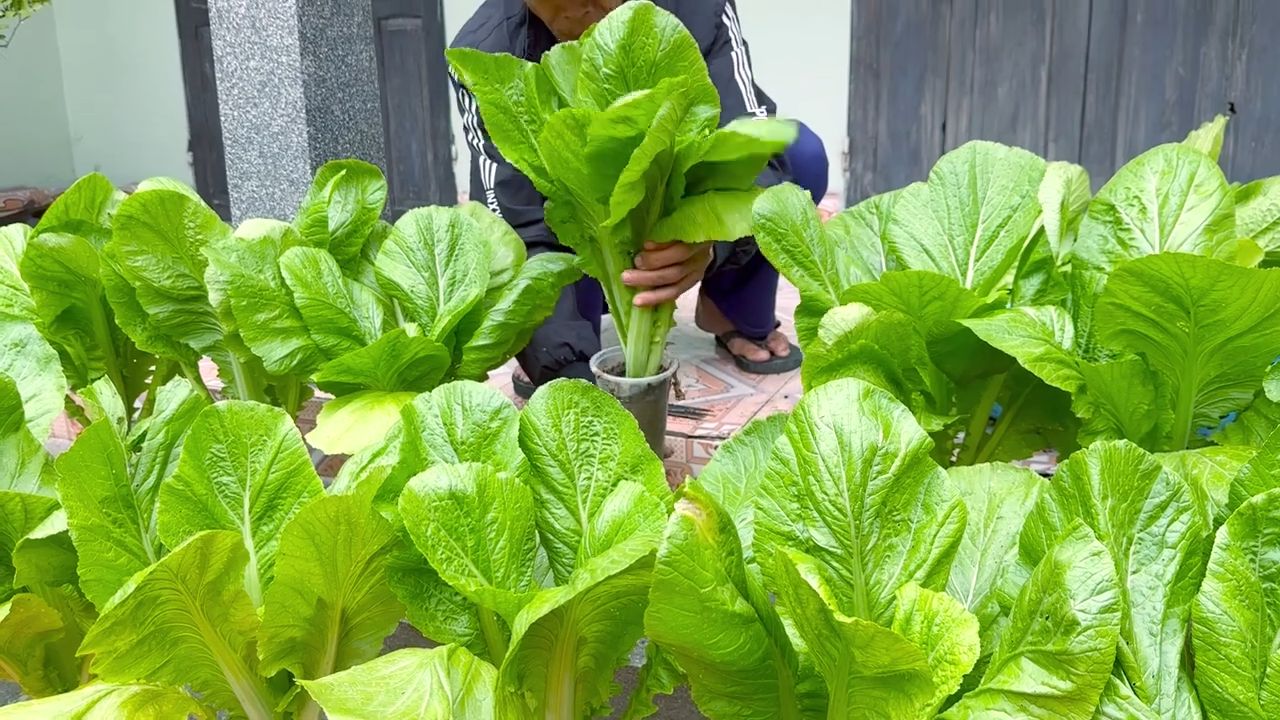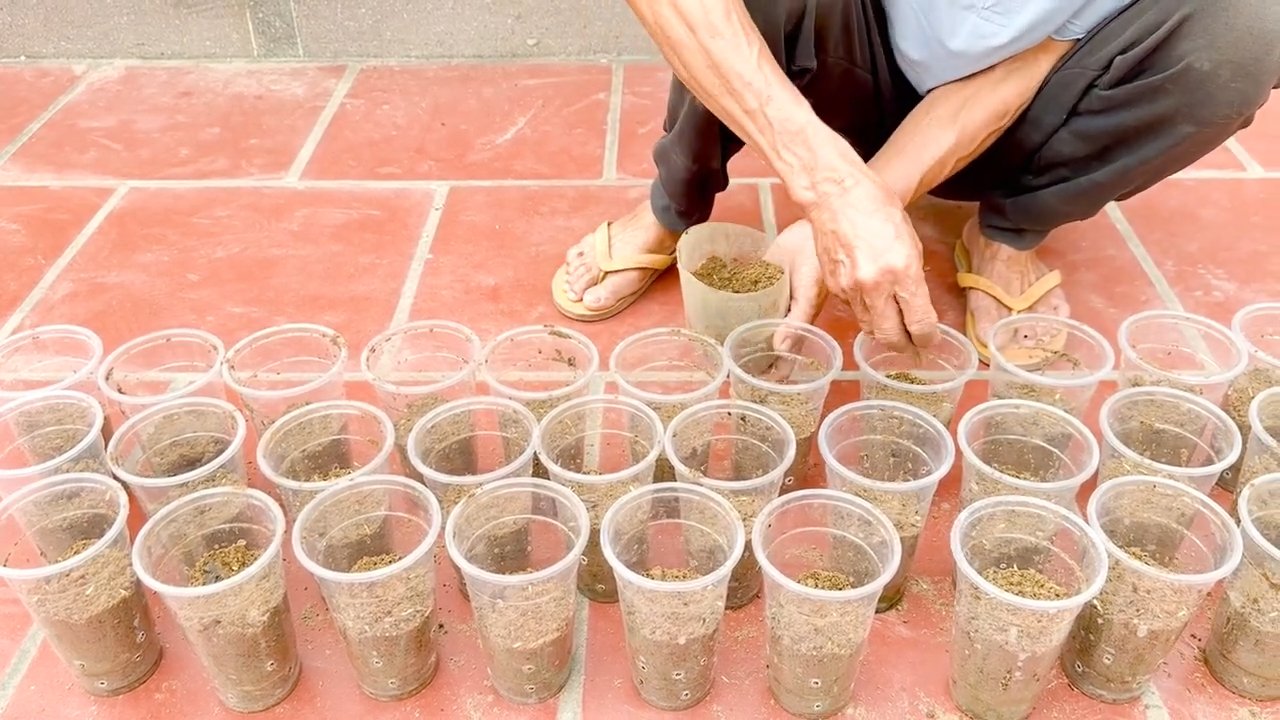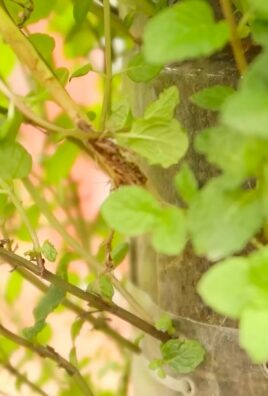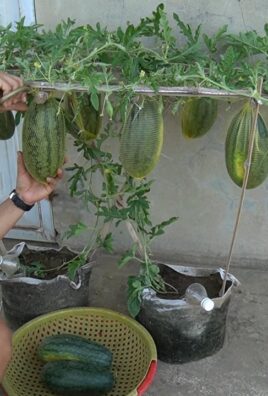Grow vegetables indoors? Absolutely! Imagine stepping into your kitchen and snipping fresh basil for your pasta, or plucking a ripe cherry tomato straight from the vine – all without ever leaving the comfort of your home. Sounds like a dream, right? Well, it’s a dream that’s easily within reach with a few clever DIY tricks and hacks.
For centuries, people have cultivated plants indoors, from the elaborate orangeries of European royalty to the humble windowsill herb gardens of everyday folks. This connection to nature, even within our homes, is deeply ingrained in our history. But let’s face it, modern life can be hectic. We’re often short on time and space, making traditional gardening seem like a daunting task. That’s where these DIY solutions come in!
This article is your guide to unlocking the secrets of indoor vegetable gardening. I’ll share simple, budget-friendly projects that will transform your living space into a thriving mini-farm. Whether you’re a seasoned gardener or a complete beginner, you’ll discover how to grow vegetables indoors successfully, even with limited sunlight and space. Get ready to ditch those bland, store-bought veggies and enjoy the unparalleled flavor of homegrown goodness, all year round!

Indoor Vegetable Gardening: Your DIY Guide for a Green Oasis
Hey plant friends! Do you also dream of harvesting fresh vegetables right in your apartment? Then you’ve come to the right place! I’ll show you how to create your own indoor vegetable garden with simple tools and a little patience. Don’t worry, you don’t need a green thumb, just a desire for fresh, homegrown delicacies!
What you need for your indoor vegetable garden
Before we get started, let’s take a look at the materials and tools you’ll need for your indoor garden project. Don’t worry, you probably have many of them at home already!
- Seeds: Choose vegetable varieties that are well-suited for growing indoors (more on that later!).
- Seed starting mix: Special soil for starting seedlings that is low in nutrients and loose.
- Pots or containers: In various sizes, depending on what you want to grow. Make sure they have good drainage!
- Planters: For the fully grown plants.
- LED grow lights: Especially important if you have little natural light.
- Spray bottle: For moistening the soil.
- Watering can: For watering the plants.
- Fertilizer: Liquid fertilizer or slow-release fertilizer for vegetables.
- Stakes or trellises: For plants that need support (e.g., tomatoes).
- Scissors or knife: For harvesting and pruning.
- Optional: A seed starter kit or mini-greenhouse for starting seeds.
Which vegetables are suitable for indoor cultivation?
Not every vegetable feels at home indoors. Here are some varieties that are particularly well-suited for growing in an apartment:
- Lettuce: Various types like loose-leaf lettuce, lamb’s lettuce, or arugula are easy to care for and grow quickly.
- Herbs: Basil, parsley, chives, mint – herbs are perfect for indoor growing and bring fresh flavor to your kitchen.
- Radishes: Grow quickly and require little space.
- Spinach: Can also be grown in pots and provides healthy leaves.
- Chilies: Bring color and spice to your indoor garden.
- Tomatoes (small varieties): Bush tomatoes or cherry tomatoes are ideal for growing in pots.
- Peppers (small varieties): Similar to tomatoes, choose smaller varieties for indoor growing.
- Strawberries: Strawberries can also be grown in pots or hanging baskets.
- Microgreens: Small, young vegetable plants that you can harvest after just a few days.
Step-by-Step Guide: Your Indoor Vegetable Garden
Now let’s get down to it! Follow these steps to create your own indoor vegetable garden:
1. Preparation for Starting Seeds
- Choose your seeds: Decide which vegetable varieties you want to grow. Pay attention to the information on the seed packet regarding the starting time.
- Prepare the seed starting containers: Fill small pots or a seed starter kit with seed starting mix.
- Sow the seeds: Press the seeds lightly into the soil and cover them with a thin layer of soil.
- Moisten the soil: Gently spray the soil with a spray bottle. It should be moist, but not wet.
- Provide warmth and light: Place the seed starting containers in a warm and bright place. A mini-greenhouse or a cover can help increase humidity. If you have little natural light, use LED grow lights.
- Watch for germination: Keep the soil moist and wait for the seeds to germinate. This can take a few days to weeks depending on the vegetable variety.
2. Pricking Out the Seedlings
- Select the strongest seedlings: Once the seedlings have developed a few leaves (approx. 2-4), you can select the strongest ones.
- Prepare larger pots: Fill larger pots with vegetable soil.
- Carefully lift out the seedlings: Gently loosen the seedlings from the seed starting mix without damaging the roots.
- Transplant the seedlings: Place each seedling in its own pot and fill it with soil.
- Water the seedlings: Water the seedlings gently.
3. Caring for Your Vegetable Plants
- Location: Place the pots in a bright location. Windowsills with plenty of sunlight are ideal. If you have little natural light, use LED grow lights.
- Watering: Water the plants regularly, but avoid waterlogging. The soil should always be slightly moist.
- Fertilizing: Fertilize the plants regularly with a liquid fertilizer or slow-release fertilizer for vegetables. Follow the instructions on the fertilizer package.
- Pruning: Regularly remove wilted leaves and side shoots to promote growth.
- Support: Plants like tomatoes or peppers may need stakes or trellises to keep from falling over.
- Pest protection: Regularly check the plants for pests like aphids or spider mites. If necessary, you can use natural pesticides.
4. Harvest Time!
- Observe your plants: Look for the signs of ripeness for each vegetable variety.
- Harvest regularly: Harvest the vegetables as soon as they are ripe. This encourages further production.
- Enjoy your harvest: Use the fresh vegetables directly in your dishes or store them briefly in the refrigerator.
Additional Tips for Your Indoor Vegetable Garden
- Humidity: Ensure adequate humidity. You can increase humidity by placing a bowl of water near the plants or using a humidifier.
- Ventilation: Ensure good air circulation to prevent mold.
- Rotation: Rotate the vegetable varieties regularly to avoid depleting the soil of specific nutrients.
- Observation: Observe your plants closely and react to changes.
- Patience: Be patient! Growing vegetables takes time and care.
Avoiding Common Mistakes
- Overwatering: Waterlogging can lead to root rot. Make sure the water can drain well.
- Too little light: Vegetables need a lot of light to grow. If you have little natural light, use LED grow lights.
- Wrong soil: Use special vegetable soil that is tailored to the needs of vegetable plants.
- Too little fertilizer: Vegetables need sufficient nutrients to grow. Fertilize the plants regularly.
- Ignoring pests: Regularly check the plants for pests and combat them if necessary.
Conclusion
With a little planning and care, you can create your own indoor vegetable garden and harvest fresh vegetables all year round. It is not only a great way to grow healthy food, but also a relaxing and rewarding!

Conclusion
So, there you have it! Taking control of your food source and enjoying fresh, homegrown produce year-round is no longer a distant dream. With a little effort and the right setup, you can successfully grow vegetables indoors, regardless of the season or your outdoor space limitations. We’ve explored the essential elements, from selecting the right vegetables and providing adequate lighting to ensuring proper watering and nutrient management.
But why is this DIY approach a must-try? Beyond the sheer satisfaction of nurturing life and harvesting your own food, growing vegetables indoors offers a multitude of benefits. You gain access to fresher, more flavorful produce, free from harmful pesticides and herbicides. You reduce your carbon footprint by minimizing transportation needs. And you can cultivate varieties that are difficult or impossible to find in your local grocery store. Plus, it’s a fantastic way to connect with nature, even within the confines of your home.
Don’t be afraid to experiment and personalize your indoor garden. Consider these variations to tailor the experience to your specific needs and preferences:
* Vertical Gardening: Maximize space by utilizing vertical planters or wall-mounted systems. This is perfect for smaller apartments or homes with limited floor space.
* Hydroponics: Explore soilless growing methods like hydroponics for faster growth and increased yields. This requires a bit more initial investment but can be incredibly rewarding.
* Aquaponics: Combine vegetable gardening with fish farming in an aquaponic system. The fish waste provides nutrients for the plants, and the plants filter the water for the fish – a truly symbiotic relationship.
* Herb Gardens: Start small with a simple herb garden on your windowsill. Herbs are relatively easy to grow indoors and add a burst of flavor to your culinary creations.
* Microgreens: For the impatient gardener, microgreens offer a quick and easy way to enjoy fresh greens in just a few weeks.
Remember, success in indoor gardening comes with patience and observation. Pay close attention to your plants’ needs and adjust your approach as necessary. Don’t be discouraged by initial setbacks – learning from your mistakes is part of the process.
We wholeheartedly encourage you to embark on this rewarding journey of growing your own vegetables indoors. It’s an investment in your health, your well-being, and your connection to the natural world.
Now, we want to hear from you! Have you tried growing vegetables indoors? What challenges did you face, and what successes did you achieve? Share your experiences, tips, and photos in the comments below. Let’s create a community of indoor gardeners and inspire others to embrace this sustainable and fulfilling practice. Your insights could be invaluable to someone just starting out. So, get your hands dirty, nurture your plants, and enjoy the fruits (and vegetables!) of your labor. Happy gardening!
Frequently Asked Questions (FAQ)
What are the easiest vegetables to grow indoors for beginners?
For those new to indoor gardening, starting with easy-to-grow vegetables is key to building confidence and avoiding early discouragement. Leafy greens like lettuce, spinach, and kale are excellent choices. They are relatively low-maintenance, require less intense light than fruiting vegetables, and can be harvested continuously as needed. Herbs such as basil, mint, and chives are also beginner-friendly and add a delightful aroma to your home. Radishes are another quick-growing option, providing a satisfying harvest in just a few weeks. Avoid vegetables that require extensive pollination or large amounts of space, such as corn or pumpkins, when starting out. Focus on mastering the basics with these simpler options before moving on to more challenging crops.
How much light do my indoor vegetables need?
Light is arguably the most crucial factor for successful indoor vegetable gardening. Most vegetables require at least 6-8 hours of direct sunlight per day. If you don’t have a south-facing window that provides sufficient natural light, you’ll need to supplement with artificial grow lights. LED grow lights are the most energy-efficient and long-lasting option. The specific type of light needed will depend on the vegetable you’re growing. Leafy greens generally require less intense light than fruiting vegetables like tomatoes or peppers. Research the specific light requirements of your chosen vegetables and invest in appropriate grow lights to ensure optimal growth and yields. Consider using a timer to automate the lighting schedule and maintain consistency.
What kind of soil should I use for indoor vegetable gardening?
The right soil is essential for providing your indoor vegetables with the nutrients and drainage they need to thrive. Avoid using garden soil, as it can be too heavy and may contain pests or diseases. Instead, opt for a high-quality potting mix specifically formulated for container gardening. These mixes are typically lighter and better-draining than garden soil. You can also create your own potting mix by combining equal parts of peat moss, perlite, and vermiculite. Consider adding compost or other organic matter to enrich the soil and provide additional nutrients. Ensure that your containers have drainage holes to prevent waterlogging, which can lead to root rot.
How often should I water my indoor vegetables?
Watering frequency depends on several factors, including the type of vegetable, the size of the container, the temperature, and the humidity. As a general rule, water your plants when the top inch of soil feels dry to the touch. Avoid overwatering, as this can lead to root rot. When you water, water thoroughly until water drains out of the drainage holes. Empty the saucer beneath the container to prevent the roots from sitting in water. Leafy greens typically require more frequent watering than drought-tolerant vegetables like peppers. Monitor your plants closely and adjust your watering schedule as needed. Using a moisture meter can help you determine the moisture level of the soil and avoid over or underwatering.
How do I fertilize my indoor vegetables?
Indoor vegetables require regular fertilization to provide them with the nutrients they need to grow and produce. Use a balanced liquid fertilizer specifically formulated for vegetables. Follow the instructions on the fertilizer label carefully, as over-fertilizing can damage your plants. Fertilize your plants every 2-4 weeks, depending on the type of vegetable and the fertilizer you’re using. You can also use organic fertilizers such as compost tea or fish emulsion. Avoid using fertilizers that are high in nitrogen, as this can promote leafy growth at the expense of fruit production. Consider using a slow-release fertilizer to provide a steady supply of nutrients over time.
How do I deal with pests and diseases in my indoor vegetable garden?
Even in an indoor environment, pests and diseases can still be a problem. Regularly inspect your plants for signs of infestation or disease. Common pests include aphids, spider mites, and whiteflies. You can control these pests by spraying your plants with insecticidal soap or neem oil. Diseases such as powdery mildew and fungal infections can be prevented by ensuring good air circulation and avoiding overwatering. Remove any infected leaves or plants immediately to prevent the spread of disease. Consider using organic pest control methods to avoid harming beneficial insects or contaminating your produce.
Can I grow vegetables indoors year-round?
Yes, with the right setup and care, you can absolutely grow vegetables indoors year-round. Providing adequate light, water, and nutrients is key to maintaining a continuous harvest. You may need to adjust your growing conditions depending on the season. For example, you may need to provide supplemental heat during the winter months or increase ventilation during the summer months. Consider staggering your planting schedule to ensure a continuous supply of fresh vegetables throughout the year. With a little planning and effort, you can enjoy homegrown produce year-round, regardless of the weather outside.
What are some common mistakes to avoid when growing vegetables indoors?
Several common mistakes can hinder your success when growing vegetables indoors. These include:
* Insufficient Light: Not providing enough light is the most common mistake. Ensure your plants receive at least 6-8 hours of direct sunlight or supplement with grow lights.
* Overwatering: Overwatering can lead to root rot and other problems. Water only when the top inch of soil feels dry.
* Poor Drainage: Ensure your containers have drainage holes to prevent waterlogging.
* Using Garden Soil: Garden soil is too heavy for container gardening. Use a high-quality potting mix instead.
* Neglecting Fertilization: Indoor vegetables require regular fertilization to thrive.
* Ignoring Pests and Diseases: Regularly inspect your plants for signs of pests or diseases and take action promptly.
* Lack of Air Circulation: Good air circulation is essential for preventing fungal diseases.
By avoiding these common mistakes, you can increase your chances of success and enjoy a bountiful harvest from your indoor vegetable garden.




Leave a Comment